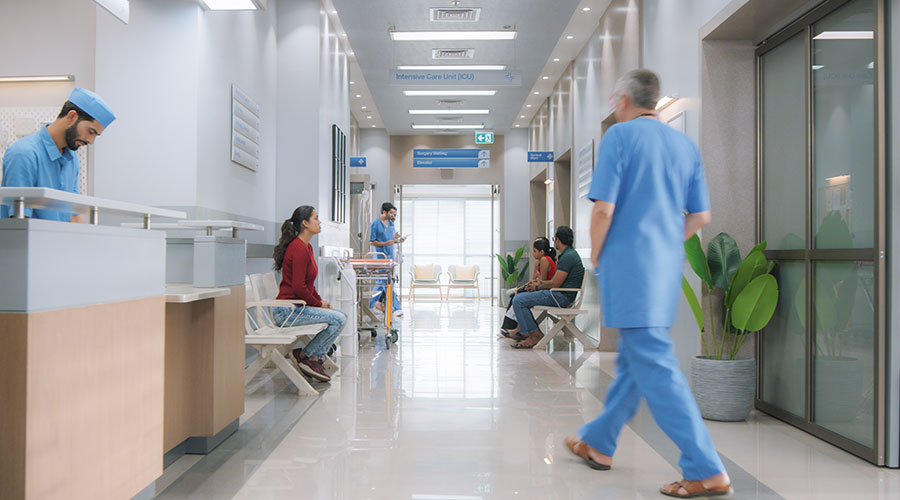When storms near, it can mean trouble for healthcare facilities and their operations as they can wreak havoc on a facility’s systems, occupants and infrastructure.
This was the case for NYC Health + Hospitals/Woodhull, which endured a rainstorm that damaged its electrical systems, putting it out of commission from September 29 to October 7.
Representatives of NYC Health + Hospitals said in a press release that after a rainstorm destroyed its Woodhull facility’s electrical systems on September 29 that they had to do a “thorough assessment and restoration.” The facility had to evacuate around 50 patients during the storm, with them being relocated to other NYC Health + Hospitals locations. Woodhull resumed inpatient operations on October 7 and fully reopened on October 10.
Power outages can cause critical infrastructure and medical devices to lose power, putting patients’ care and lives at risk. Getting these key technologies back up and running is crucial during a storm so that patients can receive the care they need.
Emergency power or backups are important to quickly restore power. An example of this is Baptist Medical Center South, which suffered two power outages in less than a day. However, after the first outage, they were able to operate limitedly on their emergency power supply.
There is also a potential for flooding with storms, which can damage electrical systems and other infrastructure within a healthcare facility, creating costly ruin for the facility to deal with in the storm’s aftermath. Flooding can also prompt facilities to evacuate staff and patients due to potential safety hazards.
Additionally, flood water carries the risk of being contaminated, which can result in a few health issues for those exposed. According to UCLA Health, gastrointestinal illness from ingestion, infection in cuts and wounds, and skin rashes from exposure are possible complications from flood water.
There is also the possibility of structural damage to the healthcare facility itself. High winds and debris can damage the exterior of the facility, even leading to roofs being ripped off. If this were to happen, the facility would become unsafe for any occupant to be in.
All these factors are risks to the safety of both staff and patients. When the situation becomes dangerous, facilities managers can help by informing staff on what to do and assisting in evacuating all the occupants. In addition, facility managers can drill staff on emergency preparedness ahead of these storms to weather them and their hazards.
Jeff Wardon, Jr. is the assistant editor for the facilities market.

 Case Study: How NYU Langone Rebuilt for Resilience After Superstorm Sandy
Case Study: How NYU Langone Rebuilt for Resilience After Superstorm Sandy Frederick Health Hospital Faces 5 Lawsuits Following Ransomware Attack
Frederick Health Hospital Faces 5 Lawsuits Following Ransomware Attack Arkansas Methodist Medical Center and Baptist Memorial Health Care to Merge
Arkansas Methodist Medical Center and Baptist Memorial Health Care to Merge Ground Broken on Intermountain Saratoga Springs Multi-Specialty Clinic
Ground Broken on Intermountain Saratoga Springs Multi-Specialty Clinic Electrical Fire Tests Resilience of Massachusetts Hospital
Electrical Fire Tests Resilience of Massachusetts Hospital